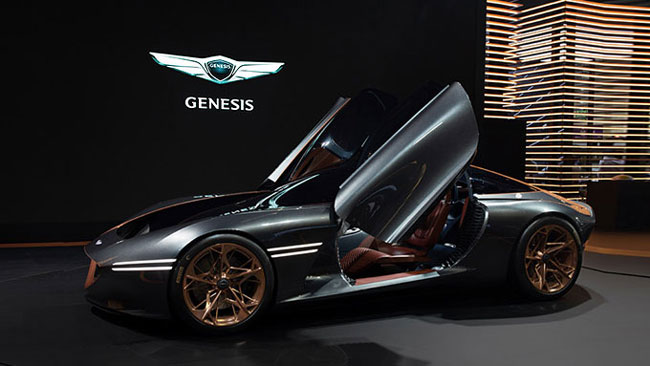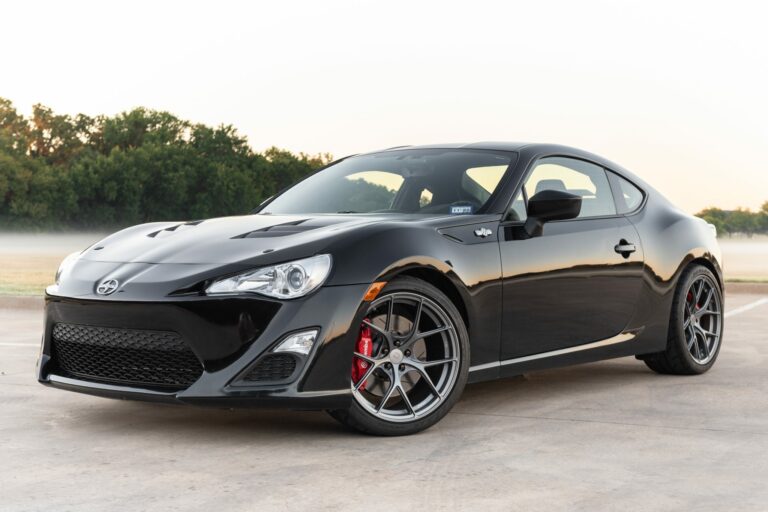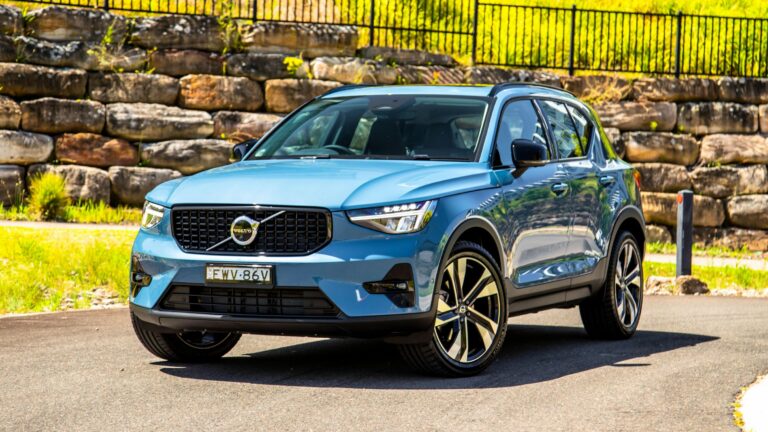World’s Safest Car Brand: A Comprehensive Guide to Automotive Safety Excellence
World’s Safest Car Brand: A Comprehensive Guide to Automotive Safety Excellence cars.truckstrend.com
Introduction: Defining Automotive Safety Excellence
In the vast landscape of automotive choices, one factor consistently ranks paramount for consumers: safety. Beyond horsepower, luxury, or fuel efficiency, the ability of a vehicle to protect its occupants and prevent accidents is a non-negotiable imperative. But what truly defines the "World’s Safest Car Brand"? Is it merely about surviving a crash, or does it encompass a broader philosophy of accident prevention, injury mitigation, and a relentless pursuit of innovation? While many manufacturers invest heavily in safety, one brand has, for decades, stood as a beacon of unwavering commitment and pioneering breakthroughs: Volvo.
World’s Safest Car Brand: A Comprehensive Guide to Automotive Safety Excellence
For Volvo, safety isn’t a feature; it’s the very foundation of their existence, famously encapsulated in their ethos: "Cars are driven by people. The guiding principle behind everything we make at Volvo, therefore, is and must remain, safety." This article will delve into what makes a car brand exceptionally safe, exploring the historical evolution of automotive safety, the critical pillars of modern protection, Volvo’s unparalleled leadership, practical advice for consumers, and a glimpse into the future of safeguarding lives on the road.
The Genesis of Automotive Safety: A Historical Perspective
The concept of automotive safety has evolved dramatically since the early days of motoring. Initially, vehicles were rudimentary, and safety was an afterthought, largely reliant on the driver’s skill and luck. However, as speeds increased and traffic grew, the need for protective measures became glaringly apparent.
Early innovations focused on basic structural integrity and rudimentary braking systems. The real turning point, however, came in the mid-20th century. It was in 1959 that Volvo introduced a groundbreaking innovation that would fundamentally change automotive safety forever: the three-point seatbelt. Invented by Volvo engineer Nils Bohlin, this simple yet revolutionary device drastically reduced injuries and fatalities. Volvo, in an unprecedented move for the industry, made the patent openly available to all car manufacturers, prioritizing human life over commercial gain. This act alone cemented Volvo’s reputation as a safety pioneer and set a precedent for future safety innovations.
Subsequent decades saw the introduction of padded dashboards, crumple zones, anti-lock braking systems (ABS), and airbags. Each advancement chipped away at the grim statistics of road accidents, slowly transforming vehicles from mere modes of transport into sophisticated cocoons of protection.
The Pillars of Modern Automotive Safety
Modern automotive safety is a multi-faceted discipline, broadly categorized into two main areas: Passive Safety and Active Safety.
A. Passive Safety:
Passive safety systems are designed to protect occupants during a collision. Their primary goal is to minimize injury severity once an impact is unavoidable.
- Structural Integrity and Crumple Zones: The vehicle’s frame is engineered with high-strength steel and strategically designed crumple zones. These zones deform in a controlled manner during an impact, absorbing kinetic energy and diverting it away from the passenger compartment, which remains as rigid as possible.
- Airbags: From front airbags to side-impact, curtain, and knee airbags, these rapidly inflating cushions provide a soft landing for occupants, preventing violent contact with hard surfaces inside the vehicle.
- Seatbelts and Restraint Systems: Beyond the fundamental three-point belt, modern systems include pre-tensioners (which tighten the belt milliseconds before impact) and force limiters (which ease the tension slightly to prevent chest injuries).
- Whiplash Protection Systems (WHIPS): Specifically designed to mitigate neck injuries in rear-end collisions, often involving specially designed seats and headrests.
- Side Impact Protection Systems (SIPS): Reinforced structures and airbags specifically designed to protect against severe side impacts.

B. Active Safety & Driver Assistance Systems (ADAS):
Active safety systems are designed to prevent accidents from happening in the first place, or to mitigate their severity by intervening before impact. This is where the bulk of modern safety innovation lies.

- Anti-lock Braking System (ABS): Prevents wheels from locking up during hard braking, allowing the driver to maintain steering control.
- Electronic Stability Control (ESC): Helps the driver maintain control during extreme steering maneuvers, preventing skids and rollovers by selectively applying brakes to individual wheels.
- Traction Control System (TCS): Prevents wheelspin during acceleration, especially on slippery surfaces.
- Automatic Emergency Braking (AEB): Uses sensors (radar, cameras, lidar) to detect impending collisions with vehicles, pedestrians, or cyclists and automatically applies the brakes if the driver doesn’t react in time.
- Lane Keeping Assist (LKA) & Lane Departure Warning (LDW): Alerts the driver if the vehicle drifts out of its lane and can even gently steer it back.
- Blind Spot Monitoring (BSM): Alerts the driver to vehicles in their blind spots, typically with an indicator light in the side mirror.
- Adaptive Cruise Control (ACC): Maintains a set speed and a safe following distance from the vehicle ahead, automatically slowing down or speeding up.
- Rear Cross-Traffic Alert (RCTA): Warns the driver of approaching vehicles when backing out of a parking spot.
- Driver Drowsiness Detection: Monitors driver behavior (e.g., steering input, eye movement) for signs of fatigue and suggests breaks.
- 360-Degree Camera Systems: Provide a bird’s-eye view of the vehicle’s surroundings, aiding parking and low-speed maneuvers.
Volvo: The Epitome of Safety Leadership
While many brands incorporate advanced safety features, Volvo’s commitment is unparalleled, forming the core of its brand identity.
A. A Legacy of Innovation:
Volvo’s safety journey began not just with the seatbelt but with a foundational principle ingrained by its founders, Assar Gabrielsson and Gustaf Larson: "Every car is driven by people. The basic principle of Volvo safety is and must remain to be built around people." This human-centric approach has driven every design and engineering decision. Their historical milestones include:
- 1959: Three-point seatbelt becomes standard.
- 1972: Child safety seat (rearward-facing).
- 1991: Side Impact Protection System (SIPS).
- 1998: Whiplash Protection System (WHIPS) and curtain airbags.
- 2008: City Safety (world’s first standard automatic emergency braking system).
- 2010s onwards: Introduction of Pedestrian Detection, Cyclist Detection, Large Animal Detection, Run-off Road Mitigation, Oncoming Lane Mitigation, and advanced Pilot Assist.
B. Holistic Safety Approach:
Volvo doesn’t just pass crash tests; they aim to eliminate serious injury and death in their vehicles altogether. This ambition is embodied in their Vision 2020 (no one killed or seriously injured in a new Volvo by 2020), which, while aspirational, drove immense progress, and continues with Vision 2030. Their approach includes:
- Real-World Accident Research: Volvo has an in-house accident research team that has investigated over 40,000 real-world accidents since 1970. This invaluable data informs their design, ensuring their safety features are effective in diverse, unpredictable scenarios, not just controlled lab conditions. The E.V.A. (Equal Vehicles for All) Initiative, for instance, used this data to highlight discrepancies in injury risk for different body types and genders.
- Advanced Structural Design: Volvo vehicles are renowned for their robust safety cages made from various grades of steel, including boron steel, one of the strongest available, to create an impenetrable passenger cell.
- Standardization of ADAS: Unlike many brands where advanced ADAS features are expensive options, Volvo often includes a comprehensive suite of active safety technologies as standard across its model lineup, making top-tier safety accessible.
C. State-of-the-Art Safety Features in Current Models:
Modern Volvos come equipped with a suite of sophisticated features:
- City Safety: Volvo’s signature AEB system, capable of detecting vehicles, pedestrians, cyclists, and large animals, automatically braking to avoid or mitigate collisions.
- Run-off Road Mitigation: If the car detects it’s about to leave the road, it can automatically steer and brake to help guide it back.
- Oncoming Lane Mitigation: If the car drifts over the center line into the path of an oncoming vehicle, it can automatically steer back.
- Pilot Assist: A semi-autonomous driving system combining adaptive cruise control with lane-keeping assistance, offering enhanced safety and comfort on highways.
Beyond Crash Tests: Understanding Real-World Safety
While independent crash test ratings from organizations like the IIHS (Insurance Institute for Highway Safety) in the US, NHTSA (National Highway Traffic Safety Administration) in the US, and Euro NCAP in Europe are crucial, they represent controlled, simulated scenarios. They are excellent benchmarks for passive safety and the effectiveness of some active systems, but they don’t capture the full spectrum of real-world driving.
The true measure of a "safest car brand" lies in its ability to prevent accidents in the chaotic and unpredictable reality of roads. This is where brands with a strong emphasis on active safety, like Volvo, excel. By integrating real-world accident data into their R&D, they ensure their systems address common accident types and human error, making their cars safer in everyday situations, not just in a lab.
Choosing Your Safest Car: Practical Advice for Consumers
When purchasing a vehicle, safety should be a top priority. Here’s how to make an informed decision:
A. Consult Independent Safety Ratings:
- IIHS (Top Safety Pick+): The highest award from the IIHS requires excellent performance in various crash tests and superior front crash prevention systems.
- NHTSA (5-Star Ratings): Provides overall safety ratings based on frontal, side, and rollover crash tests.
- Euro NCAP: Europe’s leading independent safety organization, providing comprehensive star ratings based on adult occupant protection, child occupant protection, pedestrian protection, and safety assist systems.
Always check the latest ratings for the specific model year you are considering, as features and ratings can change annually.
B. Prioritize Key Safety Features:
While a car can be loaded with tech, focus on features with proven impact:
- Automatic Emergency Braking (AEB): A non-negotiable.
- Blind Spot Monitoring (BSM): Great for highway driving.
- Lane Keeping Assist (LKA) / Lane Departure Warning (LDW): Especially useful for long drives.
- Rear Cross-Traffic Alert (RCTA): Invaluable for parking lots.
- Adaptive Cruise Control (ACC): Enhances comfort and safety on highways.
C. Research Specific Models:
Even within a brand renowned for safety, individual models may have different standard features or performance. Always look up the specific model and trim level you are interested in.
D. Test Drive and Understand the Tech:
During a test drive, pay attention to visibility, how intuitive the safety systems are, and whether they are distracting. Ask the salesperson to demonstrate key ADAS features.
E. Consider Vehicle Size and Weight:
Generally, larger and heavier vehicles offer more protection in multi-vehicle collisions due to the principles of physics. However, smaller vehicles from brands like Volvo still offer exceptional safety within their class due to superior engineering.
Maintaining Your Vehicle’s Safety Integrity
A car’s safety isn’t just built-in; it’s also maintained.
- Regular Maintenance: Keep up with scheduled service, especially checks on brakes, tires, lights, and steering components.
- Proper Tire Inflation: Correctly inflated tires are crucial for optimal braking, handling, and stability.
- Understand Warning Lights: Don’t ignore dashboard warning lights; they often indicate a safety system malfunction.
- Do Not Disable Safety Features: Unless absolutely necessary (e.g., traction control in deep snow for specific maneuvers), keep active safety features engaged.
- Stay Updated on Recalls: Respond promptly to any safety recalls issued by the manufacturer.
The Road Ahead: The Future of Automotive Safety
The quest for ultimate automotive safety continues relentlessly. The future promises even more sophisticated technologies:
- Autonomous Driving: As vehicles become more autonomous, the potential for eliminating human error (the cause of over 90% of accidents) is immense.
- Vehicle-to-Vehicle (V2V) and Vehicle-to-Infrastructure (V2I) Communication: Cars will communicate with each other and with traffic infrastructure (traffic lights, road sensors) to anticipate hazards and optimize traffic flow, further reducing collisions.
- Advanced Sensor Fusion: Combining data from multiple sensors (radar, lidar, cameras, ultrasonic) will create a more accurate and comprehensive understanding of the vehicle’s surroundings.
- AI and Machine Learning: These technologies will enable predictive safety systems that can anticipate dangerous situations before they fully develop, learning from vast amounts of driving data.
- Interior Monitoring Systems: Cameras and sensors inside the cabin will monitor driver state (drowsiness, distraction, medical emergency) and potentially even occupant positions for optimized airbag deployment.
Price Overview: Representative Models of Volvo (The "Safest Car Brand")
While a single "price table" for the world’s safest car brand isn’t feasible, as it represents a philosophy rather than a single product, we can provide an overview of typical price ranges for new Volvo models, renowned for their safety, along with their key safety highlights. Prices are estimates and can vary significantly based on trim level, optional features, region, and market conditions.
| Model | Type | Key Safety Highlights (Standard/Available) | Estimated Starting Price Range (USD) |
|---|---|---|---|
| Volvo S60 | Compact Luxury Sedan | City Safety (AEB with pedestrian/cyclist/large animal detection), Lane Keeping Aid, Oncoming Lane Mitigation, Run-off Road Mitigation, Road Sign Information, Driver Alert Control, Rear Cross Traffic Alert, Blind Spot Information System (BLIS), Pilot Assist (available). | $42,000 – $55,000 |
| Volvo S90 | Mid-size Luxury Sedan | All S60 features, plus enhanced versions and often more standard ADAS. Integrated Child Booster Cushion (available). | $58,000 – $70,000 |
| Volvo XC40 | Compact Luxury SUV | City Safety, Lane Keeping Aid, Run-off Road Mitigation, Road Sign Information, Driver Alert Control, Rear Park Assist Camera, Rear Cross Traffic Alert (available), BLIS (available). | $41,000 – $55,000 |
| Volvo XC60 | Mid-size Luxury SUV | All XC40 features, plus Oncoming Lane Mitigation, more robust standard ADAS suite. Available Pilot Assist. | $47,000 – $68,000 |
| Volvo XC90 | Full-size Luxury SUV | Volvo’s flagship SUV, designed with family safety as paramount. All XC60 features, often with more standard ADAS, advanced structural design, and extensive occupant protection. Integrated Booster Seats (available). | $57,000 – $80,000+ |
| Volvo V60 | Compact Luxury Wagon | Shares safety features with S60, offering practical utility with high safety standards. | $48,000 – $60,000 |
| Volvo V90 Cross Country | Mid-size Luxury Wagon | Shares safety features with S90, with enhanced capability for diverse terrain. | $60,000 – $75,000 |
| Volvo C40 Recharge | Compact Electric Crossover | Built on the same safety architecture as XC40, with added battery protection. Full suite of standard ADAS, including City Safety, Pilot Assist, BLIS, etc. | $54,000 – $60,000 |
| Volvo XC40 Recharge | Compact Electric SUV | All C40 Recharge features, representing Volvo’s commitment to safety in their EV lineup. | $53,000 – $58,000 |
Note: Prices are approximate MSRP for new models and do not include destination charges, taxes, incentives, or dealer markups. Specific features and standard equipment can vary by trim level and region. Always consult a local dealer for the most accurate pricing and availability.
Frequently Asked Questions (FAQ)
Q1: Is Volvo truly the safest car brand?
A1: While "safest" is subjective and other brands also produce highly safe vehicles (e.g., Mercedes-Benz, Subaru, Tesla), Volvo consistently ranks at the top due to its long history of pioneering safety innovations, human-centric design philosophy, rigorous real-world accident research, and standardization of advanced safety features across its lineup. Their commitment goes beyond just passing crash tests.
Q2: Are luxury cars automatically safer than economy cars?
A2: Generally, luxury cars often incorporate more advanced safety features and higher-quality materials (like high-strength steel) as standard, which can contribute to better protection. However, many economy brands now offer excellent safety ratings and optional ADAS suites. Always check independent safety ratings for specific models, regardless of price point.
Q3: Do active safety features make cars significantly more expensive?
A3: Initially, advanced ADAS features were often expensive options, but they are becoming increasingly standard across many vehicle segments, driven by consumer demand and regulatory pressures. While a fully loaded suite might add to the cost, core features like AEB are now common. The cost is often offset by potential insurance premium reductions and, more importantly, accident prevention.
Q4: Can I rely solely on safety ratings when buying a car?
A4: Safety ratings (IIHS, NHTSA, Euro NCAP) are excellent starting points and highly reliable for comparing passive safety performance. However, also consider the brand’s overall safety philosophy, the specific active safety features offered, and how they perform in real-world scenarios (which is harder to quantify but can be gleaned from detailed reviews).
Q5: What’s the fundamental difference between passive and active safety?
A5: Passive safety features (like airbags, seatbelts, crumple zones) protect you during an unavoidable crash, minimizing injury. Active safety features (like AEB, LKA, ABS) work to prevent a crash from happening in the first place or mitigate its severity before impact.
Q6: Will self-driving cars be safer than human-driven cars?
A6: The goal of autonomous driving technology is to significantly reduce accidents by eliminating human error, which accounts for the vast majority of collisions. While the technology is still evolving and faces challenges, the long-term vision is that self-driving cars will be far safer than human-driven ones, potentially revolutionizing road safety.
Conclusion: A Commitment to Life
The journey towards ultimate automotive safety is a continuous one, driven by innovation, research, and an unwavering commitment to protecting human life. Brands like Volvo exemplify this dedication, transforming vehicles from mere machines into sophisticated guardians. Their pioneering spirit, from the revolutionary three-point seatbelt to today’s advanced autonomous features, underscores a philosophy where safety is not an afterthought but the very essence of design.
For consumers, understanding the nuances of automotive safety, consulting independent ratings, and prioritizing essential features empowers them to make choices that truly safeguard themselves and their loved ones. Ultimately, investing in a vehicle from a brand committed to safety is investing in peace of mind and, most importantly, in life itself. The road ahead is paved with promise, as the industry continues its relentless pursuit of a future where serious injuries and fatalities on our roads become a relic of the past.






